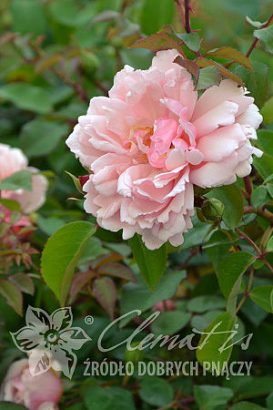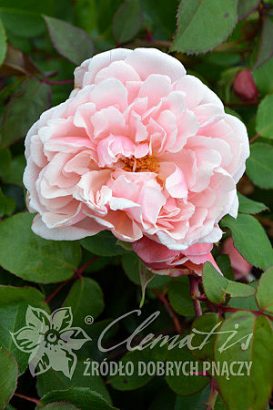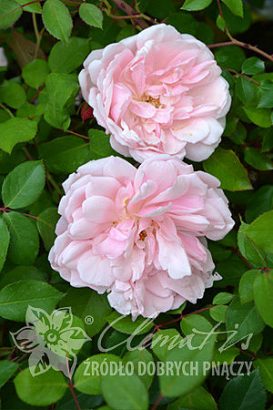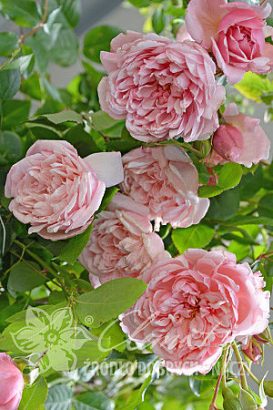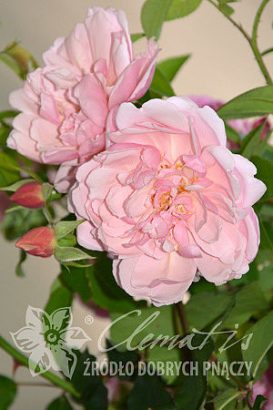Rosa ‘Albertine’
Climbing rose 'Albertine'| Decoration form | flowers |
|---|---|
| Color of flowers | light pink |
| Plants height | 4-6 m |
| Flowering month | VI, VII |
| Annual growth | 2-3 m |
| Aspect | sun, 3/4 sun, 1/2 sun |
| Frost hardiness | Zones 6 - 8 |
A classic, strong-growing and generously blooming rose of unusual, double pink flowers gathered in inflorescences. Resistant and perennial.
WHAT IT LOOKS LIKE: Flowers 7-8 cm across, light pink of a warm hue, double, very numerous, gathered in inflorescences by 3-7 flowers; bloom generously VI-VII; flowers exude strong, sugary fragrance, detectable form a couple of meter distance. Inflorescences develop on short shoots along the previous-year growth. The plant does not repeat blooming and does not yield fruit. Leaves smallish, compound of glossy leaflets. This year shoots are very long, thin and supple – easy to form and train along supports.
HOW IT GROWS: A vine A vine that against supports rather than climb along. The cultivar however belong to Climbers group. Requires tying in, grows strongly. The plant height depends mainly on the support – in Poland this cultivar may reach 4-6 m (1 m a year). The supports should be sufficiently extensive and solid.
WHERE TO PLANT: Location requirements are for a sunny or slightly shaded site; soil should be fertile and moist but well-drained. The cultivar does not tolerate compact, heavy or sandy, drying ground. Thrives in soil of slightly acidic or neutral pH. Hardy (zone 6–8).
HOW TO PLANT AND MAINTAIN: Before planting immerse the plant container in water for 10-30 min. Place the root ball in a 40 x 40 x 40 cm hole with a 10 cm layer of well-rotten manure or compost, 3-5 cm deeper than it was before. Fill the hole with fertile compost soil. In spring, dead or damaged or frozen shoots should be removed as well as those that are weak and thicken the shrub excessively. Also, the overgrown shoots or those that would develop flowers, should be cut back to the “pencil thickness”. In summer, after the bloom, the flowering shoots are pruned as far as the very base of the plant, along with the oldest and the weakest ones.
HOW TO APPLY: The cultivar perfect for house gardens, public greenery and parks, both in formal and natural areas. It may be grown in hedges, along walls, entrance gates and romantic arbours. Grown without supports, it may be a feature in a large rock garden.
ORIGIN: Raised in France by Barbier Freres & Compagnie in 1921.

